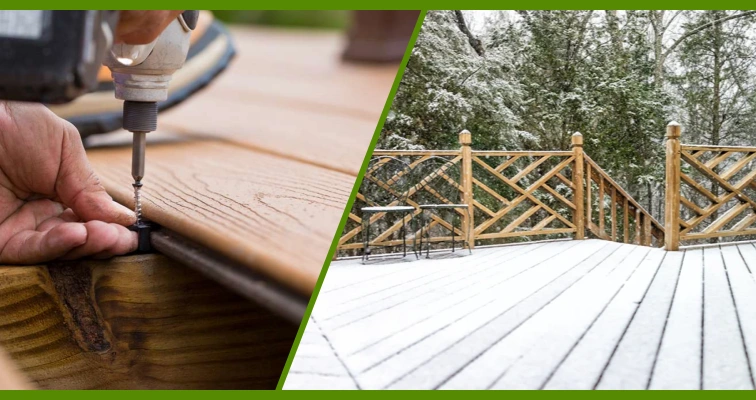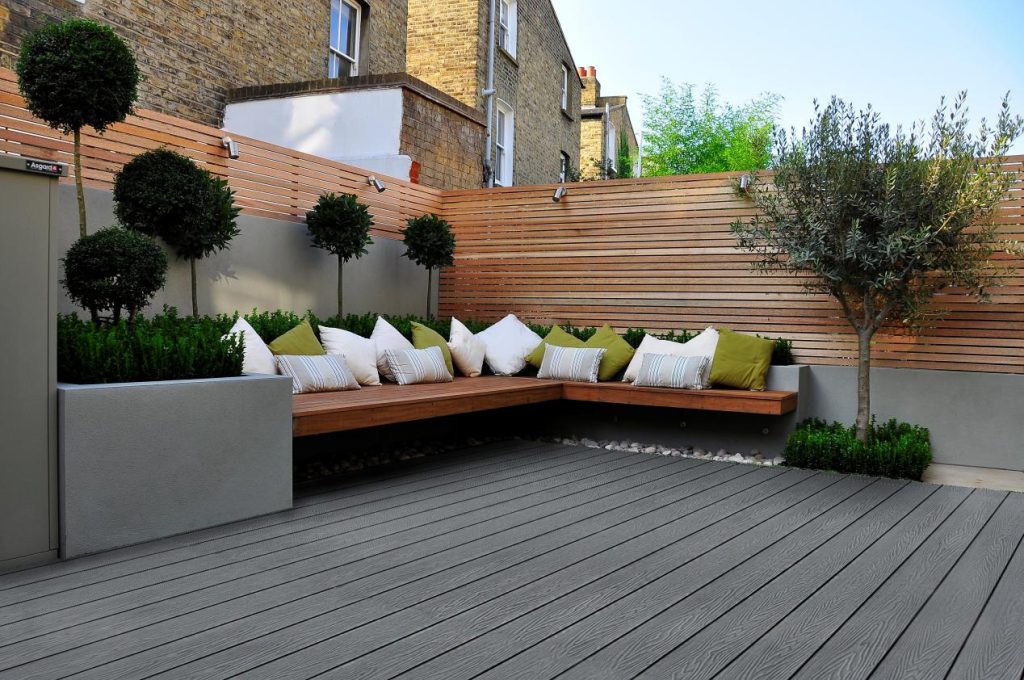As the colder chill sets in, you might be wondering if it’s possible to install WPC decking in winter. The answer is yes, and there are even some compelling reasons to consider a winter installation. In this article, we’ll explore the benefits of installing WPC decking in winter and provide practical tips for a successful project.
Benefits of Install WPC Decking in Winter
- Cost Savings:
- Winter often brings year-end sales from composite decking manufacturers, making it an economical time to purchase decking materials. Additionally, labor costs tend to be lower during the winter compared to the busier spring and summer seasons.
- Minimized Garden Disruption:
- Garden installations can involve leveling and digging, potentially causing damage. However, during the winter, many gardens are dormant, minimizing the impact of construction. This allows your garden to recover before the vibrant spring and summer seasons.
- Ease of Finding Installers:
- Winter is a less popular time for outdoor projects, making it easier to find skilled installers. By avoiding the peak demand in warmer months, you may have more flexibility in choosing an installer and getting the job done on your timeline.
Considerations for Install WPC Decking in Winter
If you decide to proceed with WPC decking installation during winter, careful planning is essential. Here are some tips to ensure a successful project:
- Choose High-Quality WPC Decking:
- Opt for the highest quality, solid composite decking available. While you may not need expensive sealants, superior-quality decking is more likely to withstand colder temperatures without becoming brittle or damaged.
- Temperature and Material Acclimatization:
- Check the manufacturer’s guidelines for the recommended installation temperature range. Some WPC materials may become brittle in extreme cold. Allow the decking material to acclimate to outdoor temperatures for at least 48 hours before installation.
- Choose the Right Day:
- Select a day with milder temperatures and minimal precipitation. Extremely cold days can make the material more challenging to work with, so aim for favorable weather conditions.
- Leave Sufficient Expansion Gaps:
- Account for temperature-related expansion and contraction by leaving proper expansion gaps between boards. This prevents issues such as buckling when the composite decking expands as the weather warms up.
- Use the Right Tools:
- Ensure that the tools you use are suitable for cold weather conditions. For example, use a saw that is appropriate for cutting the material in colder temperatures.
- Work Efficiently:
- Minimize the exposure of materials to extreme cold by working efficiently. This helps prevent potential issues related to material brittleness.
- Follow Manufacturer Guidelines:
- Always adhere to the specific guidelines provided by the manufacturer for installing WPC decking in cold weather. Different brands may have different recommendations for optimal installation conditions.
- Avoid Icy Surfaces:
- Clear the installation area of ice to prevent accidents. Remove any snow or ice from the site before starting the installation.
- Consider Professional Installation:
- If you’re unsure about handling the installation in winter conditions or if the project is complex, consider hiring a professional installer experienced in cold weather installations.
In conclusion, install WPC decking in winter is not only possible but can also offer cost savings and reduced disruption to your garden. By following these tips and considering the specific guidelines from the manufacturer, you can enjoy a successful and durable composite decking installation, even in colder temperatures.








